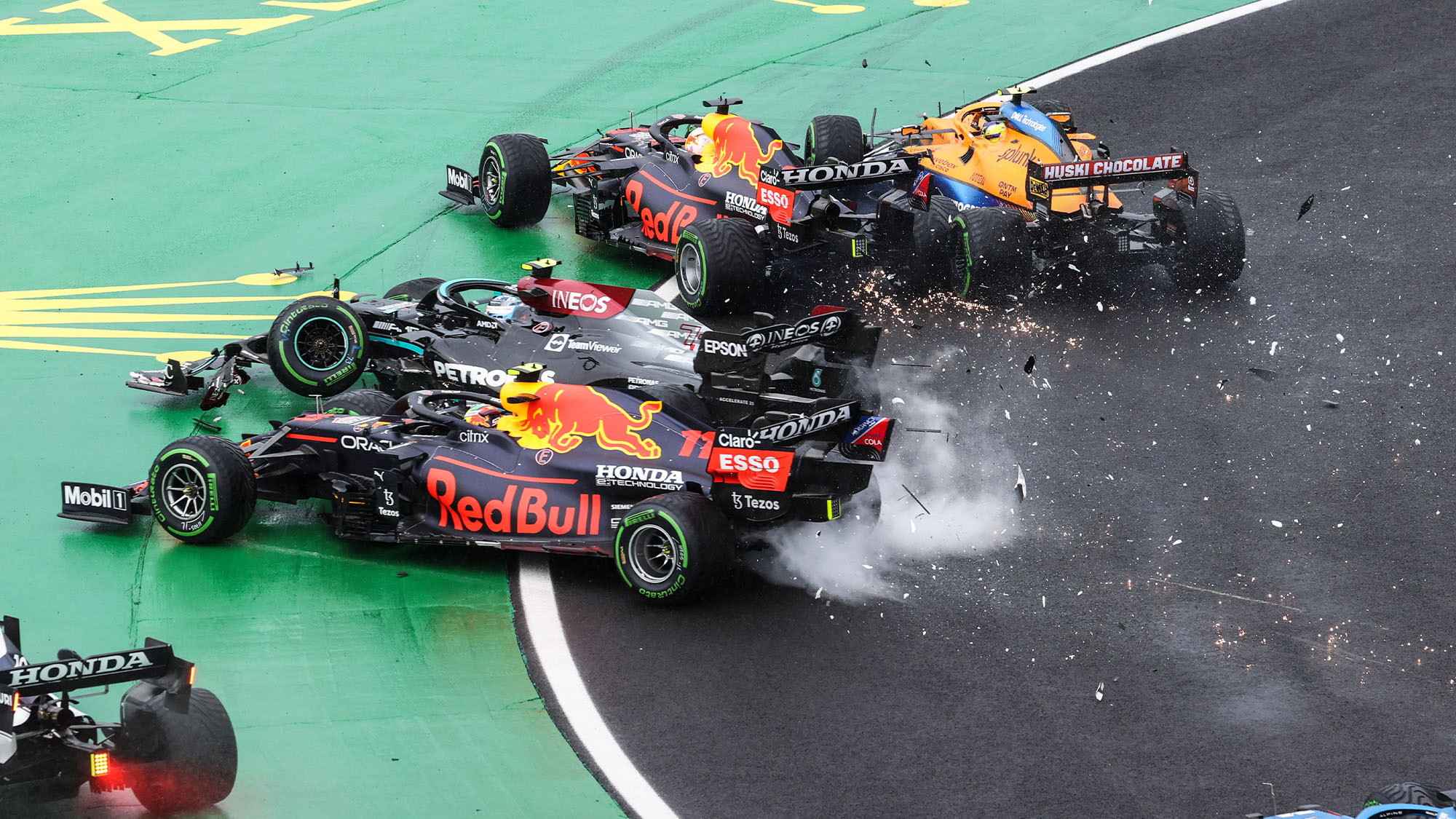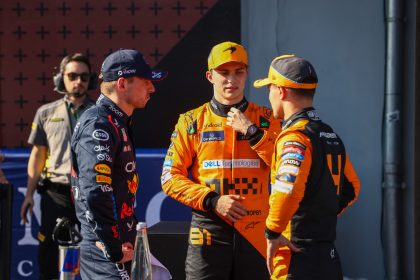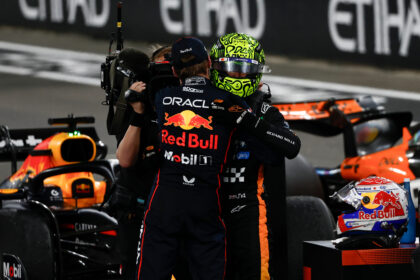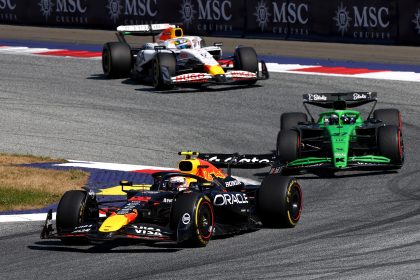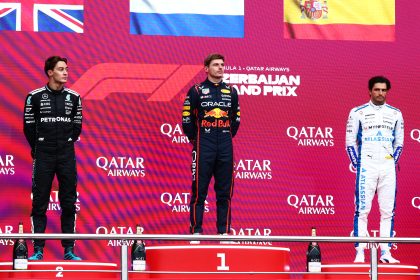There are circuits that flatter the brave, and there are circuits that expose the pretenders. Then there is the Hungaroring, a 4.381-kilometer ribbon of Hungarian tarmac that, for nearly four decades, has been the sport’s most merciless lie detector. If you want to know who’s truly in command of their craft – driver, engineer, or strategist – you come to Budapest in July, when the air is thick, the track is dusty, and the margin for error is measured in millimeters. Welcome to the “Monaco without the walls,” where the only thing more relentless than the corners is the heat.
- The Kart Track for Grown-Ups: Anatomy of a Torturer
- Turn 1: The False Promise
- The Rhythm Section: Turns 2, 3, and 4 – Where Flow Meets Fear
- The Chicane: Turns 6 and 7 – The Sausage Kerb Ballet
- The Middle Sector: Where Lap Time Goes to Die
- The Final Insult: Turn 14 – The Lap’s Last Stand
- The Setup Conundrum: Chasing the Perfect Balance
- History’s Greatest Hits: When the Hungaroring Bit Back
- The Modern Challenge: Data, Rhythm, and the Human Element
- The Numbers Don’t Lie: Hungaroring’s Statistical Quirks
- Voices from the Paddock
- Waste a bit more time
The Kart Track for Grown-Ups: Anatomy of a Torturer
Let’s dispense with the pleasantries. The Hungaroring is not a circuit for the faint-hearted or the lazy. It is a relentless sequence of 14 corners, most of them tight, technical, and designed to punish the overconfident. Overtaking is a myth here, a bedtime story told to rookies. The real battle is not with your rivals, but with the track itself.
As one seasoned driver put it, Every lap feels like a challenge. And he wasn’t exaggerating. The circuit’s narrow width and constant direction changes mean that a single mistake can cost you not just a lap, but an entire weekend. The track is often compared to a go-kart circuit, but that’s like comparing a chess match to a bar fight. Here, the chessboard bites back.
Turn 1: The False Promise
The main straight at the Hungaroring is a rare moment of respite, a chance to breathe before the circuit’s first act of cruelty. Turn 1 is a tight right-hand hairpin, approached at over 300 km/h and requiring the kind of braking that makes carbon discs weep. It’s the only real overtaking spot, and everyone knows it.
But don’t be fooled. The corner was reprofiled in 2003 to “improve” overtaking, but what it really did was increase the number of first-lap pile-ups and late-braking heroics gone wrong. As the knowledge_tool reminds us:
Numerous first-lap collisions and overtaking attempts gone wrong, including several dramatic starts and late-braking moves.
If you get Turn 1 wrong, you’re not just losing a position – you’re inviting a train of angry rivals to mug you all the way to Turn 2.
The Rhythm Section: Turns 2, 3, and 4 – Where Flow Meets Fear
Survive Turn 1, and you’re immediately thrown into the long, downhill left of Turn 2. This is a corner that rewards patience and punishes greed. Trail braking is essential, and the exit is everything – get greedy on the throttle, and you’ll compromise your line into Turn 3, a flat-out right kink that sets up the approach to Turn 4.
Ah, Turn 4. The fast, blind left-hander over a crest. It’s the kind of corner that separates the brave from the merely optimistic. There’s little run-off, and the apex is invisible until you’re already committed. As the knowledge_tool notes:
Requires precision and confidence, as running wide can mean a trip through the gravel or a brush with the barriers.
It’s also a favorite spot for the stewards, who delight in deleting qualifying laps for track limits violations. If you want to see a grown driver sulk, tell him his best lap at Turn 4 didn’t count.
The Chicane: Turns 6 and 7 – The Sausage Kerb Ballet
If you’ve made it this far, congratulations. Now comes the chicane, a left-right combination that looks innocuous on paper but is anything but. The curbs are high and aggressive, and the temptation to attack them is strong. But as any veteran will tell you, the Hungaroring’s chicane is a trap for the unwary.
Many drivers have spun or damaged their cars on the curbs, especially in wet or slippery conditions.
The secret? Be done with your braking before the first kerb, get back on the throttle to lift the nose, and pray you don’t launch yourself into the Hungarian stratosphere. It’s a section that rewards those with a delicate touch and punishes the ham-fisted.
The Middle Sector: Where Lap Time Goes to Die
From the chicane, the circuit flows into a series of medium-speed left-rights – Turns 8, 9, 10, and 11. This is the rhythm section, where a good lap can become great, or a great lap can unravel in an instant. The car needs to be perfectly balanced, the tires need to be alive, and the driver needs to be in the zone.
Maintaining speed through both corners without running wide is difficult, especially as tires degrade.
It’s here that the Hungaroring reveals its true nature: a circuit that demands consistency, precision, and a willingness to dance on the edge of disaster.
The Final Insult: Turn 14 – The Lap’s Last Stand
After all that, the circuit saves its final insult for the last corner. Turn 14 is a long, tightening right-hander that leads onto the main straight. It’s off-camber, easy to misjudge, and absolutely critical for lap time. Get it wrong, and you’ll be a sitting duck into Turn 1. Get it right, and you might just buy yourself a moment of peace.
Drivers have lost pole positions or podiums by running wide or spinning here, especially in changing conditions.
In other words: the Hungaroring never lets you relax. Not for a second.
The Setup Conundrum: Chasing the Perfect Balance
If you think the drivers have it tough, spare a thought for the engineers. The Hungaroring is a setup nightmare, a place where compromise is king and perfection is a myth.
Teams run Monaco-levels of downforce, chasing grip through the endless corners. Mechanical grip is at a premium, so suspensions are softened, and every millimeter of ride height is agonized over. Brake cooling is a constant worry, as the low speeds mean the discs don’t get enough air. And then there’s the tires – oh, the tires.
The track surface can be dusty and low-grip, especially early in the weekend. Tire degradation is a significant factor, and teams must find a setup that preserves tire life while maintaining pace.
It’s no wonder that teams with superior chassis – think McLaren in the late ‘80s, Renault in the early 2000s, Red Bull in the hybrid era – have often punched above their weight here, even when lacking the most powerful engines.
History’s Greatest Hits: When the Hungaroring Bit Back
The Hungaroring has a knack for producing the unexpected. It’s been the scene of upsets, heartbreaks, and the occasional miracle.
- 1986: Nelson Piquet’s audacious pass around the outside of Ayrton Senna at Turn 1 – still one of the greatest overtakes in F1 history.
- 1997: Damon Hill, in an uncompetitive Arrows, leads until the final lap, only to be robbed by a hydraulic failure.
- 2006: Jenson Button wins his first Grand Prix in a rain-soaked epic, starting 14th and mastering the treacherous conditions.
- 2014: Daniel Ricciardo overtakes Hamilton and Alonso in the closing laps to win a rain-affected thriller.
- 2021: Chaos at the start, a massive first-corner crash, and Esteban Ocon takes his maiden victory after holding off Sebastian Vettel.
As the knowledge_tool so dryly puts it:
The Hungaroring is known for being twisty and difficult to overtake, making bold moves especially memorable.
For a circuit that’s supposedly impossible to pass on, it has a habit of delivering the improbable.
The Modern Challenge: Data, Rhythm, and the Human Element
In the age of simulation and telemetry, you might think the Hungaroring’s secrets have been unlocked. Think again. The circuit’s demands are as much psychological as they are technical. Finding the rhythm – that elusive flow through the middle sector – is as much about the driver’s state of mind as it is about the car’s setup.
The circuit rewards drivers who can find a rhythm through the flowing corners. A strong engineer/driver partnership is crucial to fine-tune the car for the unique demands of the track.
It’s no coincidence that the greats – Senna, Schumacher, Hamilton – have all excelled here. They understand that at the Hungaroring, the battle is not just with the stopwatch, but with themselves.
The Numbers Don’t Lie: Hungaroring’s Statistical Quirks
- Only one wet race in over 25 years, but when it rains, chaos reigns.
- The circuit has seen more than its fair share of first-lap pile-ups, especially at Turn 1.
- Track limits at Turn 4 have become a modern obsession, with countless qualifying laps deleted.
- The average number of overtakes per race remains stubbornly low, making qualifying and pit strategy king.
Voices from the Paddock
Let’s give the last word to those who know the pain and pleasure of the Hungaroring best:
Yes, he’s fast. So was Jean Alesi. Look how that turned out.
Pedro, F1 Historian
It’s one of those circuits we love because of the way it flows. Every lap feels like a challenge.
Alex Albon
DRS doesn’t make you brave, it makes you pass.
Pedro, F1 Historian
Waste a bit more time
If you’re still hungry for more Hungaroring heartbreak, here are some links to keep you entertained (and possibly educated):
- Hungaroring F1 Track guide – YouTube
- F1 24 Master Hungaroring – (Hungary Track Guide + Setup) – YouTube
- Hungaroring Track Guide – Coach Dave Academy
- Hungaroring: The Twisty Challenge of the Hungarian Grand Prix
- Track Guide to Hungaroring Circuit – DRIVER61.com
- Mastering Hungaroring – Be fast here and you’re fast everywhere. (Reddit)
